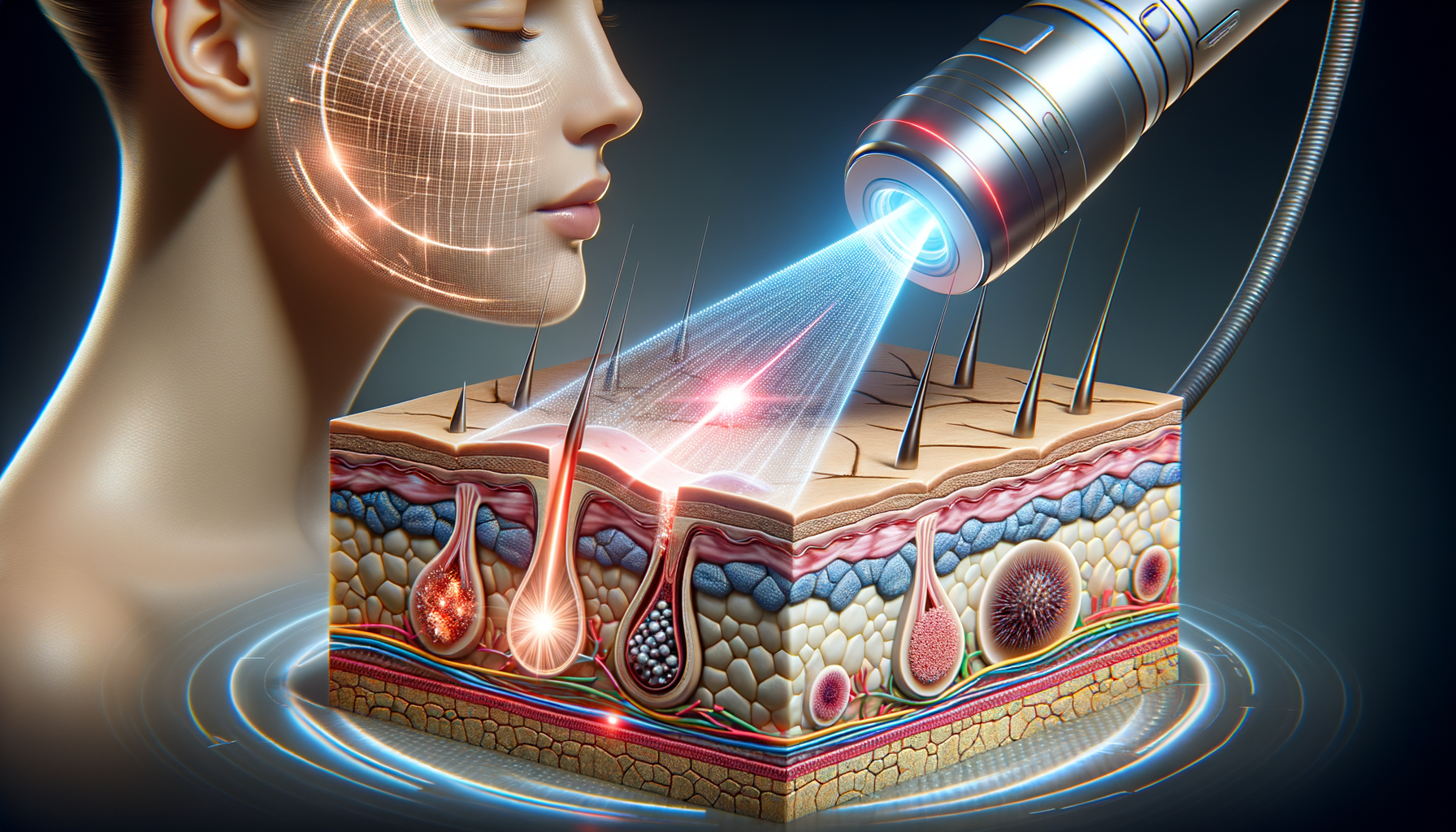
The Science and Benefits of Laser Skin Treatment
Understanding Laser Skin Treatment
Laser skin treatment is a non-invasive procedure that uses concentrated beams of light to address and correct a variety of skin issues. The technology works by targeting specific skin layers, promoting collagen production, and encouraging skin regeneration. This treatment is versatile and can be used for multiple purposes, including reducing wrinkles, scars, and pigmentation.
There are several types of laser treatments available, each designed for specific skin concerns. These include:
- Ablative lasers, which remove the outer layers of skin to reveal fresher skin beneath.
- Non-ablative lasers, which work beneath the skin’s surface to promote collagen growth.
- Fractional lasers, which target small areas of the skin for a more precise treatment.
Each type of laser treatment has its own set of benefits and potential side effects, making it essential for individuals to consult with a dermatologist to determine the most appropriate option for their specific needs.
Benefits of Laser Skin Treatment
Laser skin treatment offers numerous advantages, making it a sought-after solution for many skin-related issues. One of the primary benefits is its ability to improve skin texture and tone, resulting in a more youthful appearance. By stimulating collagen production, laser treatments help to reduce the appearance of fine lines and wrinkles, giving the skin a smoother look.
Additionally, laser treatments are effective in reducing the visibility of scars, including those caused by acne. The procedure can also target pigmentation issues such as age spots and sun damage, leading to a more even skin tone. The precision of laser technology allows for targeted treatment, which means that surrounding skin is left unharmed, reducing recovery time and minimizing risks.
Moreover, laser treatments can be tailored to suit various skin types and concerns, offering a personalized approach to skincare. This customization ensures that patients receive the most effective treatment for their unique skin conditions.
Potential Risks and Considerations
While laser skin treatment is generally considered safe, it is not without potential risks. Common side effects include redness, swelling, and temporary discomfort in the treated area. In some cases, patients may experience changes in skin color, blistering, or scarring. These risks highlight the importance of choosing a qualified and experienced professional to perform the procedure.
Individuals considering laser treatment should also be aware of the recovery process. Depending on the type of laser used, recovery times can vary from a few days to several weeks. Following post-treatment care instructions is crucial to ensure optimal results and minimize complications.
It’s also important to manage expectations. While laser treatment can significantly improve the skin’s appearance, it may not completely eliminate all imperfections. A thorough consultation with a dermatologist can help set realistic goals and ensure that the treatment aligns with the patient’s desires and skin type.
Comparing Laser Treatments to Other Skin Procedures
Laser skin treatment is often compared to other dermatological procedures such as chemical peels, microdermabrasion, and dermal fillers. Each of these treatments offers unique benefits and is suited for different skin concerns.
Chemical peels involve applying a chemical solution to the skin to remove damaged outer layers, similar to ablative lasers but using a different method. Microdermabrasion is a less invasive procedure that exfoliates the skin, improving texture and tone but without the deeper impact of laser treatments.
Dermal fillers, on the other hand, are used to add volume to the skin, reducing the appearance of wrinkles and fine lines. Unlike laser treatments, fillers do not address skin texture or pigmentation issues. The choice between these procedures depends on the individual’s specific skin concerns, desired results, and recovery time considerations.
Ultimately, laser treatments offer a comprehensive solution for those looking to address multiple skin concerns in one procedure, making them a popular choice for many seeking significant skin improvement.
Conclusion: Is Laser Skin Treatment Right for You?
Deciding whether laser skin treatment is the appropriate choice involves careful consideration of your skin type, concerns, and expectations. For many, it offers a versatile and effective solution for achieving smoother, more radiant skin. However, consulting with a dermatologist is crucial to ensure the treatment is suitable and to discuss any potential risks or side effects.
Laser skin treatment has revolutionized the way we approach skincare, providing options that cater to a wide range of needs. As technology continues to advance, these treatments are likely to become even more accessible and effective, offering hope to those looking to rejuvenate their skin and boost their confidence.